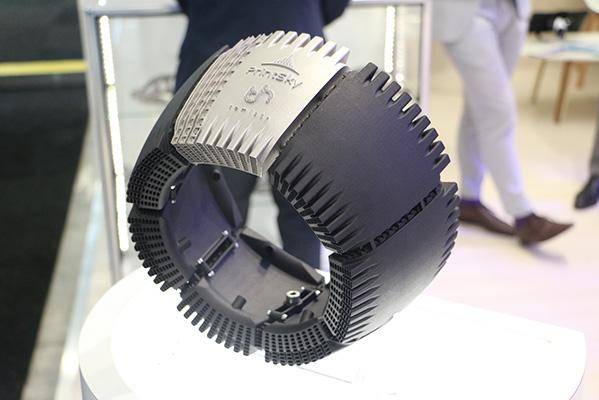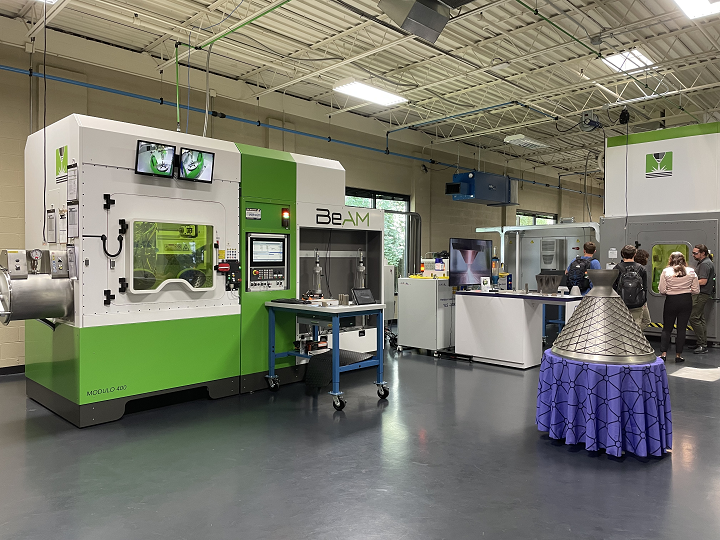Raytheon subsidiary Collins Aerospace continues to ramp up its long-established additive manufacturing (AM) efforts. This time, it has enlisted PrintSky, a joint venture between French aerospace company Sogeclair and AddUp, to research a new generation of 3D printed flight actuation hardware.
3D Printing New Aircraft Technology
With support from the French Civil Aviation Authority (DGAC) as part of the France Relance program, this project is meant to develop novel technologies to improve the sustainability of aviation by 2030. Among the technologies is an electromechanical actuation system that combines sensors, engine, electronic cards, and other parts into a complex assembly.
PrintSky will be designing and manufacturing the structures for the system with several key functions in mind. This includes the ability to resist mechanical loads, dissipate heat emitted by the parts, and remain in precise operation while exposed to electromagnetic disturbances. AM could be bring unique advantages to the project, according to Sogeclair New Technologies Manager and PrintSky Manager Nicolas Correge. “Thanks to our technologies, we can optimize the structure of the actuation system and integrate multi-physical functions such as a heater and other peripheral parts,” Correge said.
The 3D Printing Partners Involved
PrintSky was founded in 2019 to develop and manufacture complex metal components with 3D printing. So far, its publicly discussed efforts have included an Inconel turbine disk for a rocket engine produced with the French space agency, the National Centre for Space Studies, and a heat exchanger that it is developing with Liebherr Aerospace under a European Commission grant. Correge said of PrintSky’s capabilities: “PrintSky offers a multifunctional solution for new generation equipment such as heat exchangers and electromechanical components so as to contribute to the transformation of the aeronautics industry and meet decarbonation challenges.”
 Hewam heat exchanger exposed on Sogeclair aerospace booth at Paris Air Show 2019. Image courtesy of Temisth.
Hewam heat exchanger exposed on Sogeclair aerospace booth at Paris Air Show 2019. Image courtesy of Temisth.Sogeclair (XPAR: SOG) itself has been in the business of aerospace engineering, including the development of design and simulation products, since 1962. While Airbus historically represented the majority of its revenues, it has been able to diversify more recently. Airbus represented 60 percent of its profits in 2007 but only 16 percent during the first half of 2021.
Established by French firms Fives and Michelin, AddUp is an important player in the 3D printing industry. It represents just one of a handful of manufacturers of both powder bed fusion and directed energy deposition metal 3D printers. It is in the process of targeting a number of specific verticals, from aerospace and automotive to jewelry and mold making. Meanwhile, it is improving the quality of its 3D printers through new automation techniques, while also expanding its footprint globally.
 Equipment at the AddUp grand opening of its updated Ohio facility.
Equipment at the AddUp grand opening of its updated Ohio facility.Collins Aerospace and its parent company, Raytheon, have been involved in AM for some time. Raytheon has researched heat management technology since at least 2015. Collins is rapidly growing its additive capacity with a new center in North Carolina and an AM extension in Iowa, where it will be housing a massive NXG XII metal 3D printer from SLM Solutions. This complemented by partnerships with Morf3D, owned by Mitsubishi’s Nikon, and Sintavia.
What’s most interesting here may be that large conglomerates are turning to and forming additive service bureaus to serve their needs. In some cases, these services are industry specific. Airbus already established Premium AEROTEC and, via AddUp, Michelin and Fives have created PrintSky. Siemens has backed MakerVerse, which supports its energy turbines. Nikon acquired Morf3D and brought satellite part 3D printing in house. By backing these initiatives, the companies reap the immediate rewards of research, development, and the production of parts for their high-cost, specialty applications. At the same time, they are nurturing the creation of new, tangent markets.
Subscribe to Our Email Newsletter
Stay up-to-date on all the latest news from the 3D printing industry and receive information and offers from third party vendors.
You May Also Like
Gorilla Sports GE’s First 3D Printed Titanium Cast
How do you help a gorilla with a broken arm? Sounds like the start of a bad joke a zookeeper might tell, but it’s an actual dilemma recently faced by...
Nylon 3D Printed Parts Made More Functional with Coatings & Colors
Parts 3D printed from polyamide (PA, Nylon) 12 using powder bed fusion (PBF) are a mainstay in the additive manufacturing (AM) industry. While post-finishing processes have improved the porosity of...
$25M to Back Sintavia’s Largest Expansion of Metal 3D Printing Capacity Since 2019
Sintavia, the digital manufacturing company specializing in mission-critical parts for strategic sectors, announced a $25 million investment to increase its production capacity, the largest expansion to its operations since 2019....
Velo3D Initiates Public Offering in a Bid to Strengthen Financial Foundations and Drive Future Growth
Velo3D (NYSE: VLD) has been among a number of publicly traded 3D printing firms that have attempted to weather the current macroeconomic climate. After posting a challenging financial report for 2023,...































